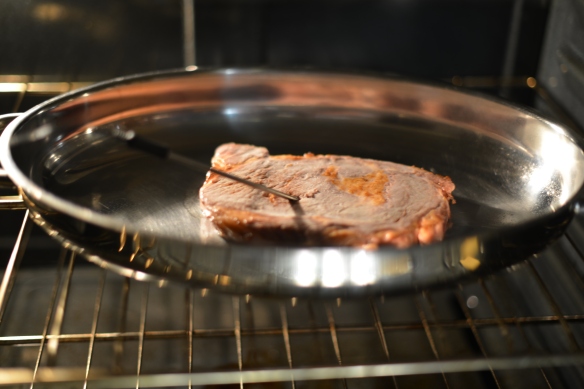
Seared with a torch, cooked at 170F. (Brockhaus Photo)
In 2012 I won a copy of a something I had placed on my wish list the minute it was published: “Modernist Cuisine: The Art and Science of Cooking”. It is a five-volume wonder that’s found in the collections of restaurants around the world; I first got my hands on it in Germany, when I was working at Amador. My copy was back in the U.S., at my parents’ house, where it had been shipped.
One of the first things I did when I returned to the U.S., in 2013, was open the box containing the books and dip into the volumes. (The volumes are stored in an acrylic case, and if there is someone you really love who loves to cook you should get this for them. It costs about $500.) I did not, however, have enough time to start cooking from it, so I put the books back into their case and the entire thing back into the box and vowed to, as soon as possible, begin using it in my kitchen.
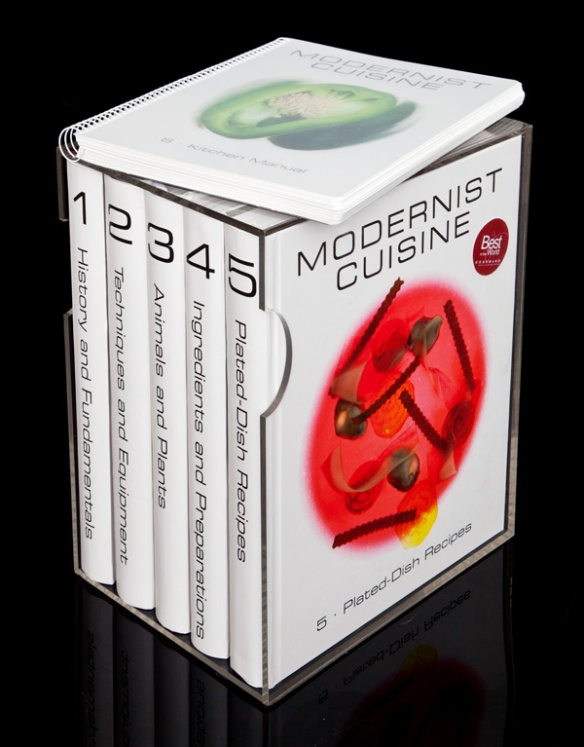
Much to read, much to cook, much to eat. (Photo courtesy Modernist Cuisine)
That time has come. Yesterday I put a rib eye in the freezer, initial prep for Low-Temp Oven Steak. Today I took the steak from the freezer and seared it with a torch, making sure to pay attention to the fat on the sides of the meat. My gas oven’s lowest temperature setting is 170F – the method Nathan Myhrvold and his team perfected uses 160F – but that’s not an issue. Use 160F if you can; if not, just use the lowest setting on your range. I inserted the probe of my digital thermometer into the thickest part of the rib eye and set the unit to notify me when the internal temperature of the steak reached 134F.

Perfect temperature (overlook the imperfect plate and the large flake of Maldon I overlooked). (Brockhaus Photo)
The steak was ready in less time that I anticipated, so I didn’t have time to make the spinach dish I had planned, but who cares? I removed the rib eye from the oven and put it on a cutting board, sliced it immediately, drizzled melted butter over it, then sprinkled some salt on top. It tasted very good – the searing with the torch created that flavor we all love on a steak, and the slow and low cooking resulted in extreme tenderness.
I am making a list of different cuts of beef to prepare using this method, and this is the “Modernist Cuisine” recipe that is up next at Brockhaus: 72-Hour Braised Short Ribs.
Like this:
Like Loading...
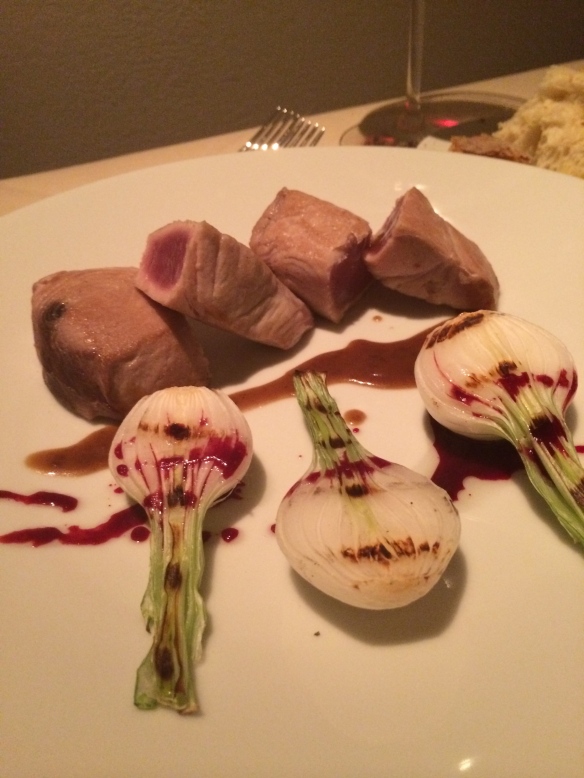
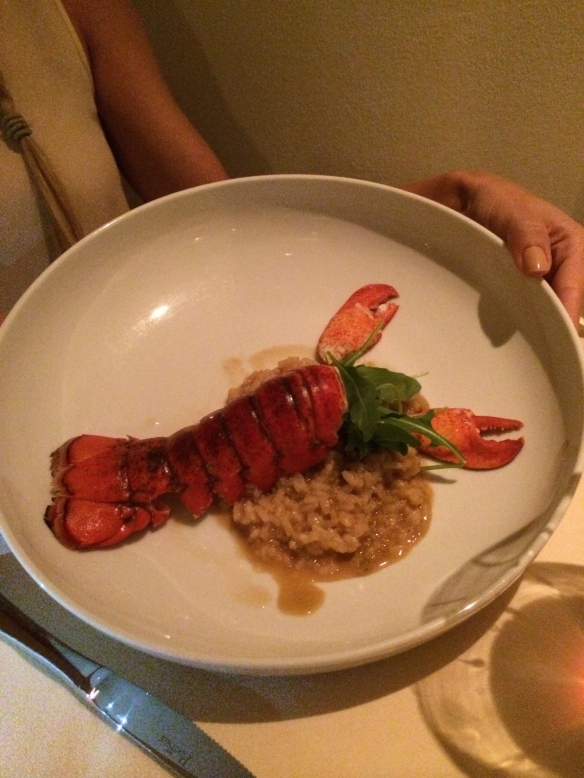
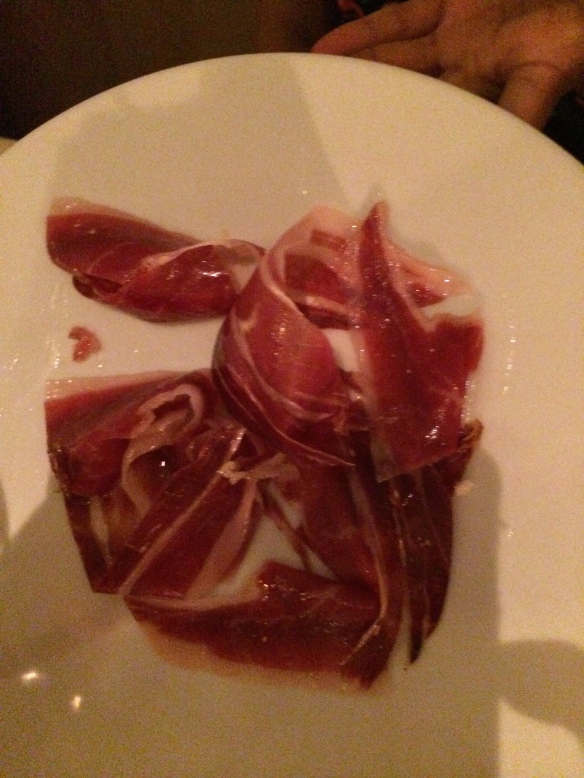
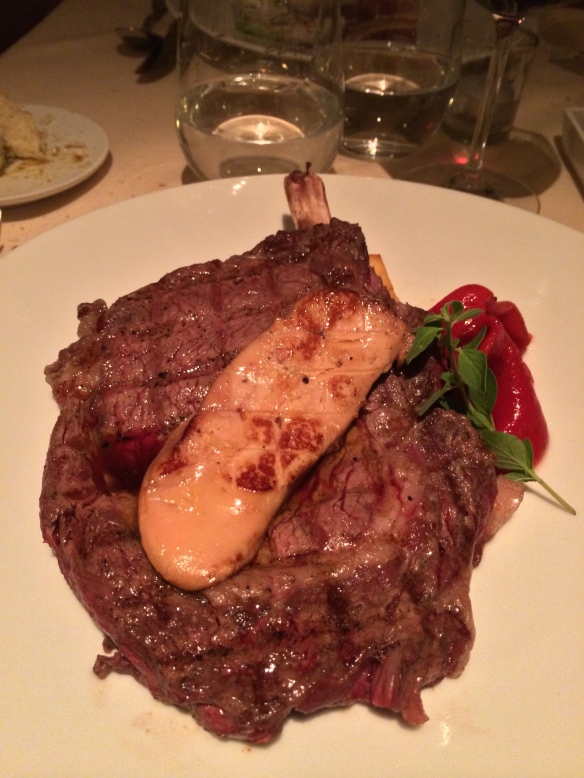



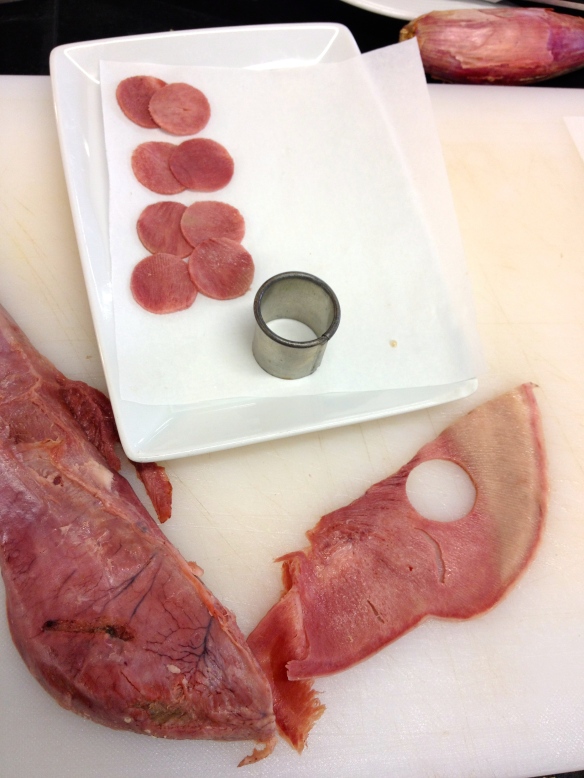


Recent Comments